Just like some people, there are certain kinds of plants that can always be relied upon to make an entrance.
By this, I mean that they can be very effectively used to elegantly frame a doorway or to punctuate a path, a flight of steps or a gate, those high-profile parts of any garden that need to look good no matter what the time of year.
Many are evergreen and almost all possess the kind of great bone structure and statuesque growth habit that garden designers like to describe as architectural, traits that make them stand out from the crowd for all the right reasons.
A classic example is the evergreen spurge known as Euphorbia characias subspecies wulfenii, the hardy, sun-loving, drought-tolerant, fast-growing sub-shrub that the English garden designer Gertrude Jekyll famously described as “one of the grandest of plants”.
READ MORE
Happiest in a free-draining soil, it forms a dense mound of grey-green, evergreen foliage, from which its large candles of acid-yellow flowers appear in spring. Impressively versatile, resilient and with a long season of interest, it’s one of those plants that never puts a foot wrong.
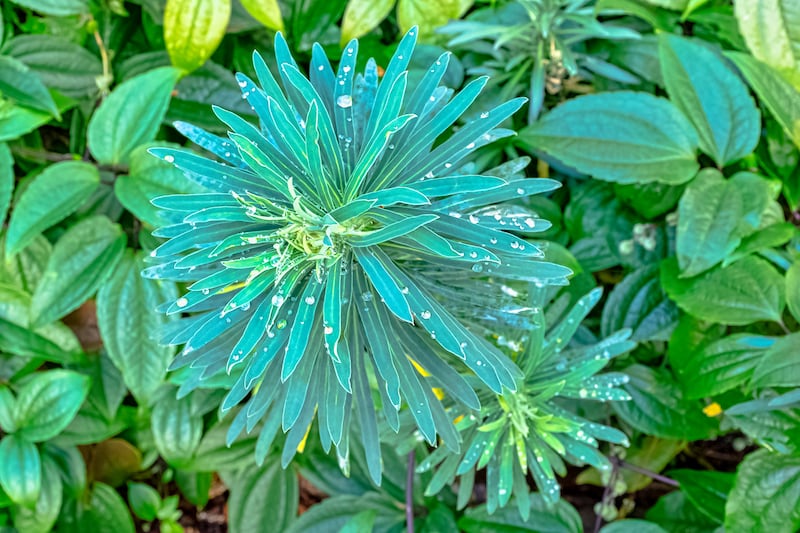
The same can be said of its more compact close relative, Euphorbia characias ‘Black Pearl’, whose nectar-rich spikes of black-eyed, lime-green flowers appear on the plant from March-July.
Even in the depths of winter this undemanding evergreen has much to offer, contributing structure and handsome foliage interest when it’s most needed.
So too – if variegation is your thing – does Euphorbia characias ‘Tasmanian Tiger’, a robust variety with grey-green leaves smartly edged with cream. All of these will also grow well in a large pot or tub, making them a great choice for container gardens.
Another classic example of a plant that can be relied on make an entrance is the Irish yew, Taxus baccata ‘Fastigiata’, a botanical exclamation mark if ever there was one.
Prized for its strongly vertical growth habit, this slow-growing, hardy, evergreen coniferous tree can be found growing in many of Ireland’s grandest gardens, where it’s often used to frame doorways, gateways and to punctuate formal avenues and pathways.
Its offspring, Taxus baccata ‘Fastigiata Robusta’ is even more columnar and upright in growth habit, slowly forming a slender, dense evergreen pillar that’s perfect for ‘anchoring’ a planting scheme to the hard landscaping and linking it visually to nearby buildings.
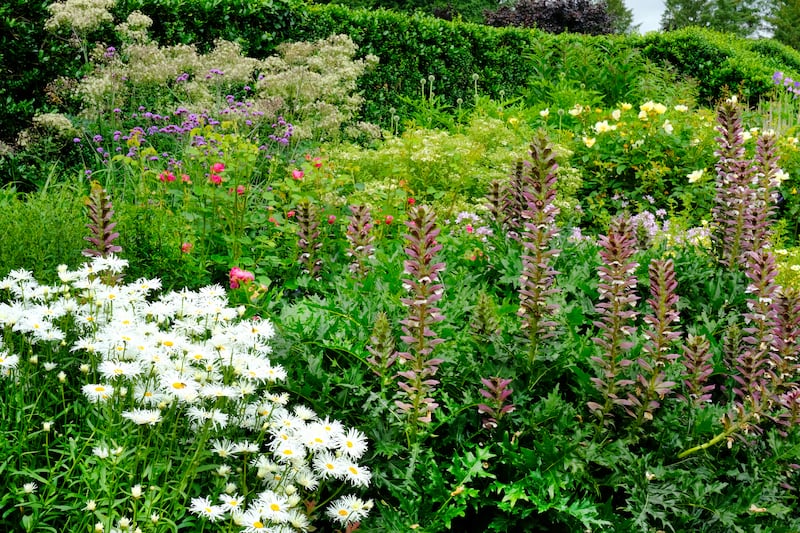
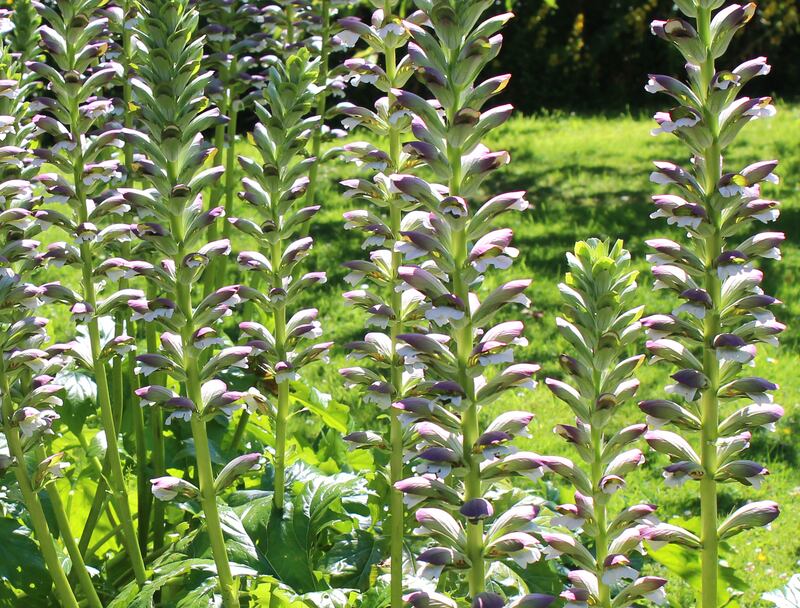
Similarly, another enduring garden classic long favoured by garden designers and landscape architects for its ability to handsomely frame an entranceway, is acanthus or bear’s breeches, the hardy perennial whose giant, deeply-lobed, glossy leaves are so intrinsically architectural that stylised carvings of them feature in the temples of ancient Greece and Rome.
Semi-evergreen in milder Irish gardens, it forms a statuesque clump of foliage from which the tall, spiny, white-and-purple flower spikes emerge in early summer.
Happy in full sun or light shade, this drought-tolerant perennial needs a fertile, well-drained soil and, once happy, will put down deep roots that make it almost impossible to kill. For that same reason, take the time to position it carefully.
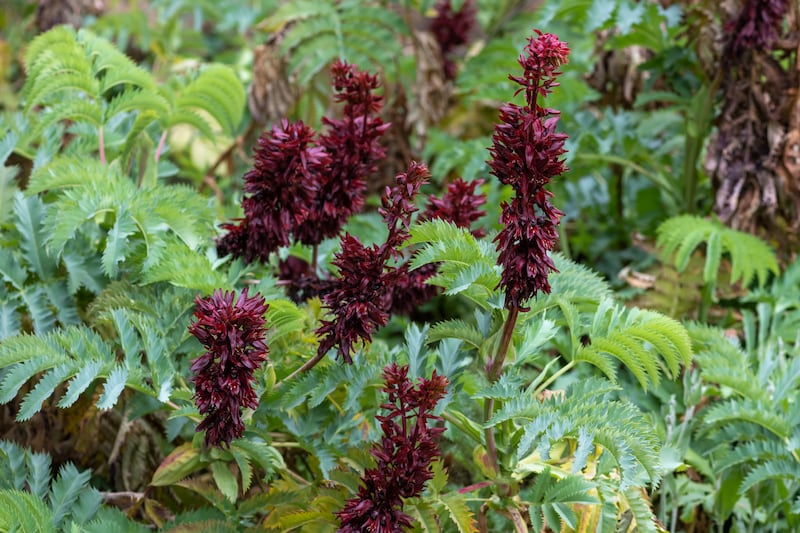
Likewise, if you can give it a sheltered, sunny spot, then the honey flower (Melianthus major) is another wonderful showstopper that looks right at home in a courtyard garden growing next to an entrance or doorway.
A half-hardy, semi-evergreen sub-shrub, it’s prized for its huge, blue-green, serrated leaves that smell of peanut butter when rubbed and which give a striking sub-tropical look to any planting scheme.
Where space permits, it looks especially good grown in combination with other large architectural shrubs such as the evergreen Pittosporum tobira and varieties of schefflera and fatsia.
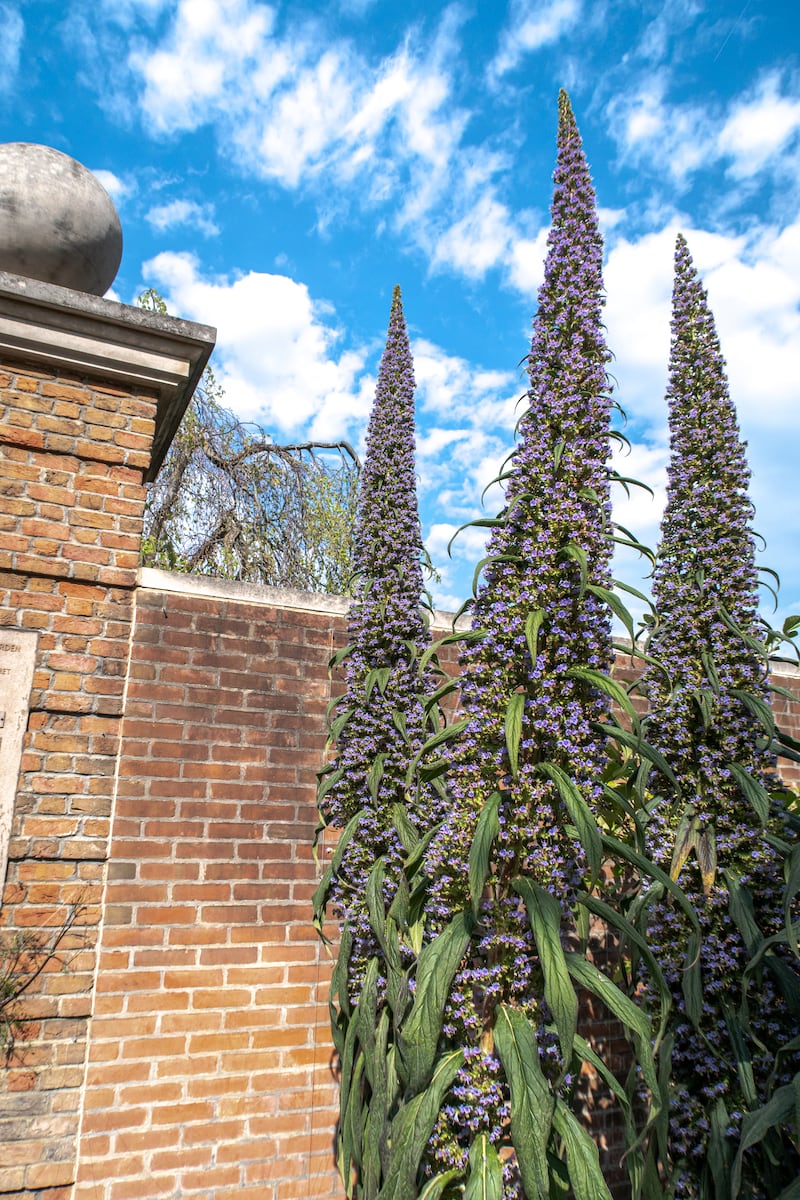
Alternatively, for an exotic flourish, the tree echium (Echium pininana) is a plant of such exaggerated proportions – everything about it is extravagantly outsized from its rosette of enormous silver leaves to its cartoonishly tall flower spikes – that it’s impossible to ignore.
Only suitable for milder gardens with free-draining soils, this giant-sized, short-lived biennial often generously self-seeds about the place, as seen in the OPW-managed Wicklow gardens of Kilmacurragh, where it has sprinkled itself through the beds and pathways immediately surrounding the ruined remains of Kilmacurragh House.
Just bear in mind that the young seedlings deeply resent root disturbance so if you want it to persist in your garden, it’s best leave a few in-situ where they appear rather than attempting to transplant them.

Ornamental grasses are another group of architecturally striking plants that are ideal for giving structure and bold foliage interest to those visually prominent areas of a garden that need to look smartly dressed no matter what the season.
Large ornamental grasses or grass-like plants that will add great year-round visual impact to an entrance include the glorious New Zealand tussock grass, Chionochloa rubra, which forms a giant plume of slender, rusty-gold leaves that quiver in the wind.
Another is Libertia grandiflora (also known as Libertia chilensis), a hardy, very resilient, long-lived perennial that’s happy in sun or light shade and most soils other than very wet ones.
Boldly architectural, it forms dense clumps of strongly vertical, slender, sword-like leaves and produces tall stems of white flowers that appear in late spring-early summer.
The various species of astelia, a handsome clump-forming perennial prized for its elegant foliage, will perform a similar role.
Their striking good looks aside, all of these grasses or grass-like plants are reliably evergreen, always an important quality to bear in mind when choosing the most suitable plants to frame any entranceway.
Of course, not every garden can easily accommodate these statuesque species. Examples of smaller plants that pack a very stylish punch but are more suitable for compact outdoor spaces or containers include many kinds of ferns.
Planted into a cool, humus-rich, damp but fertile soil either side of a shady garden gate or doorway where their ornamental fronds can be appreciated, Polystichum setiferum ‘Herrenhausen’; Cyrtomium fortunei ‘Clivicola’; and Dryopteris erythrosora will all provide the kind of year-round structure and bold foliage interest required for these very high-profile areas of the garden.
Other relatively compact, but boldly architectural evergreen plants, that enjoy the same kind of cool, damp but well-drained, shady conditions include skimmia, the green-and-gold variegated Daphne transatlantica ‘Summer Ice’, hellebores, box balls, and bergenia while suitable herbaceous species include hostas and the shade-loving deciduous grass known as Hakonechloa macra.
For a sunny spot, try Euphorbia rigida as well as the various forms of Euphorbia wulfenii mentioned above, compact conifers such as Pinus mugo, Podocarpus nivalis ‘Kilworth Cream, Mahonia ‘Soft Caress’, evergreen varieties of agapanthus, and smaller evergreen grasses and sedges such as Festuca glauca and Uncinia rubra.
Last but not least, don’t forget those handsome climbers or trained wall shrubs with strongly architectural foliage. Examples include the evergreen Hydrangea seemannii; fig trees (the deciduous Ficus carica) and the evergreen Pileostegia viburnoides, all of which are guaranteed to add oomph to any garden.
This week in the garden
It’s been an exceptionally wet autumn in many parts of the country, with soils in most gardens sodden or waterlogged.
So, to avoid badly damaging the soil structure and causing compaction, hold off from planting bulbs, hedging or bare-root shrubs and trees, or lifting or dividing plants, or digging over beds and borders until the ground has a chance to drain and conditions improve.
If you’ve already bought bare-root plants, put these somewhere cool, dark and frost free, until you can plant them, making sure to keep their vulnerable root systems safe by wrapping them in a damp, old towel or plastic bag. Likewise, store bags of bulbs in a cool, dark shed until planting conditions become suitable .
If you want to use berried holly from the garden for Christmas decorations, then now is the time to pick it before hungry garden birds devour the berries in the coming weeks.
Use a sharp, clean secateurs to cut the branches to just above a node (this will help the tree to produce healthy new growth) and then place them in a bucket of water in a cool, dark shed until needed.
Dates for your diary
Monday, November 28th (8pm), Kilternan Parish Centre, Enniskerry Road, Kilternan, County Wicklow D18 ET99, ‘How to create seasonal, sustainable, natural Christmas arrangements using foliage and seedheads foraged from the garden and the wild hedgerows”, a talk and practical demonstration by Fionnuala Fallon on behalf of Kilternan Gardening Club, all welcome
Friday, December 2nd, Calling all garden designers, the closing date for applications for show garden designers for Bloom 2023 is Friday, December 2nd. For more information visit www.bordbiabloom/participate
















